
Here’s another project from Dutch designer Anke Weiss, this time a table made from 150 bonsai trees.
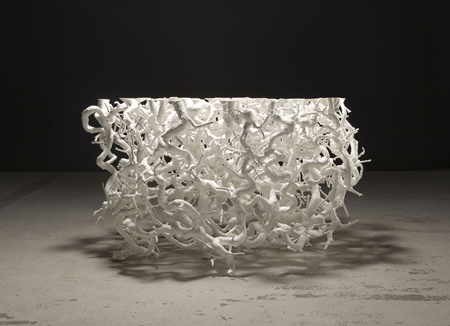
The trees take seven years to grow. Weiss then joins them using traditional carpentry techniques and coats the structure with epoxy resin.
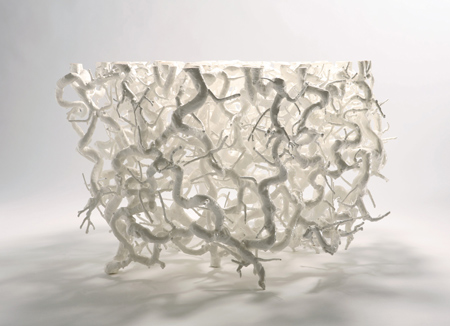
The flat top of the table exposes the structure of the wood itself, achieved through years of compressed growth.
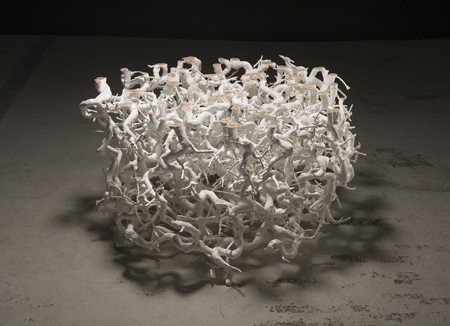
Weiss also created the Packaging Lights we featured a few months ago, and the Love in the City project we posted on Valentines day.
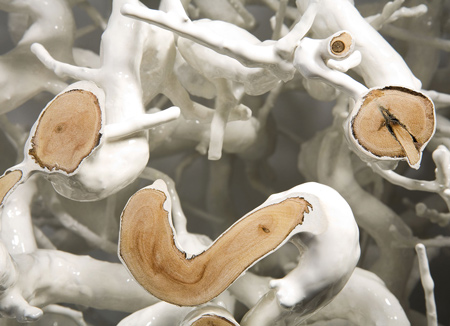
Here’s an explanation from Weiss:
–
Bonsai – Structure #2 or Bonsai Tree table
material: 150 bonsai trees, epoxy
technique: carpentry (wood-on-wood connections)
measurements: h 50 cm, d 80 cm
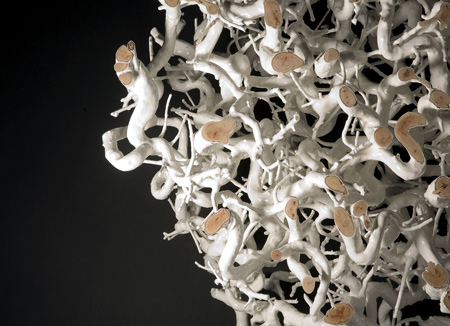
This work is the result of a research project about scale. The “network” structure can be found in every scale: by looking in as far as possible (cells, molecules, etc.), or by looking on the natural human scale (veins, lungs, trees, riverbeds, maps etc.), or by looking as far out as possible (solar system, galaxies). Even representations of the virtual world (the internet) resemble this structure.
“Bonsai Structure #2” is a constructed-grown structure resembling my idea of a general aesthetic that should evoke a feeling of recognition and beauty, because it is the product of a ‘new nature’ or cultivated nature.
Another aspect of this work is that it is pure crafts. All 150 trees are hand-cut and assembled by wood-on-wood connections. The epoxy layer covering the wood is also applied by hand with a brush. Not to mention the seven years of bonsai shaping every single tree had to go through.
The surface coating gives the table a very industrial look. On the top, where the material is cut off straight, the underlying wood with its very virtuous and expressive structure (achieved through the years of compressed growth) is visible.
As a material choice the bonsai tree serves as a symbol for scale and heightens the quality of the work with it’s special characteristics. Every single tree is by itself already a design object.




所有评论